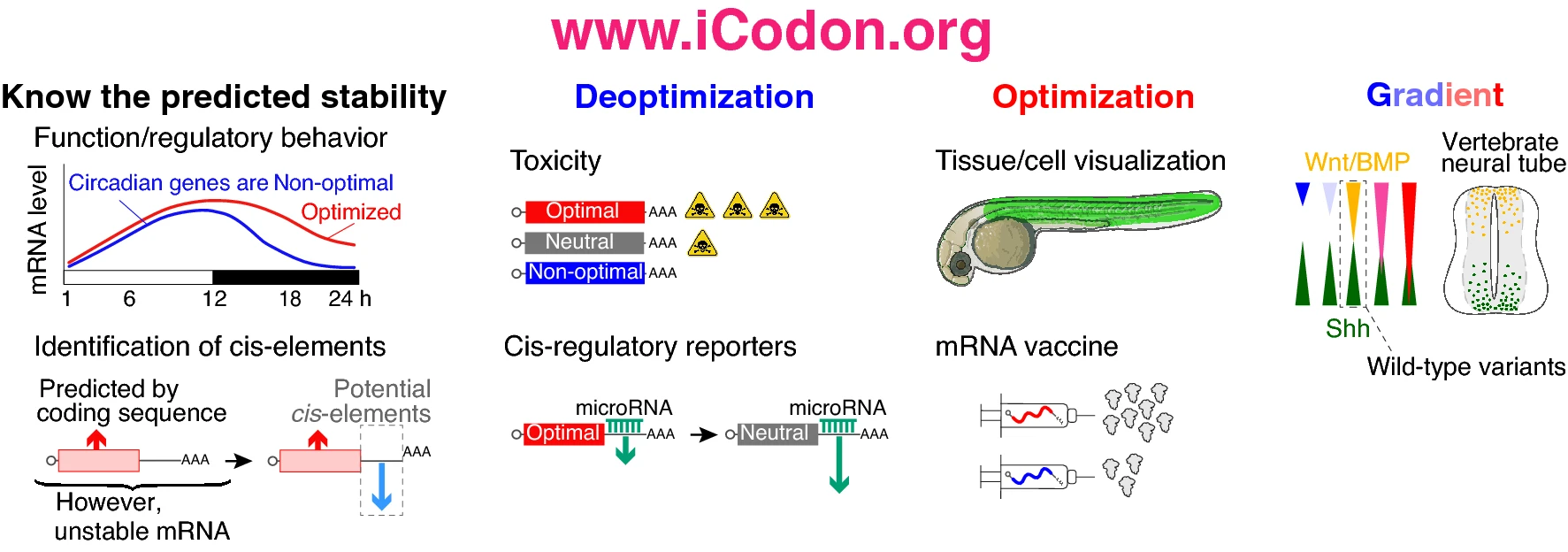Santiago G. Medina-Muñoz, Michay Diez, Luciana A Castellano, Gabriel da Silva Pescador, Qiushuang Wu, & Ariel Bazzini
Messenger RNA (mRNA) stability substantially impacts steady-state gene expression levels in a cell. mRNA stability is strongly affected by codon composition in a translation-dependent manner across species, through a mechanism termed codon optimality. We have developed iCodon, an algorithm for customizing mRNA expression through the introduction of synonymous codon substitutions into the coding sequence. iCodon is optimized for four vertebrate transcriptomes: mouse, human, frog, and fish. Users can predict the mRNA stability of any coding sequence based on its codon composition and subsequently generate more stable (optimized) or unstable (deoptimized) variants encoding for the same protein. Further, we show that codon optimality predictions correlate with both mRNA stability using a massive reporter library and expression levels using fluorescent reporters and analysis of endogenous gene expression in zebrafish embryos and/or human cells. Therefore, iCodon will benefit basic biological research, as well as a wide range of applications for biotechnology and biomedicine.
You can install the released version of iCodon from GitHub with:
# install.packages("devtools")
devtools::install_github("santiago1234/iCodon")This is a basic example which shows you how to optimize the gene expression of the following gene:
library(iCodon)
cat(test_seq)
#> ATGTGGAGCGGCGGAGCTGAGCAACAACACCCTAAAACCGACAAATCTCACCGATGCAATGGCGTCGACAGCTCAAGAAGAAAGAACAGATCGCAGCGGTGGCGATATGAAGTCAAGAAAACTGGATGAsequence <- test_seq
result <- optimizer(sequence, specie = "mouse", n_iterations = 10, make_more_optimal = T)
#> optimizing sequence (more optimal)
#> starting genetic algorithm ...
#> 2.3.4.5.6.7.8.9.10.11.visualize_evolution(result)To see what else can be accomplished with this package see the help with:
browseVignettes("iCodon")


